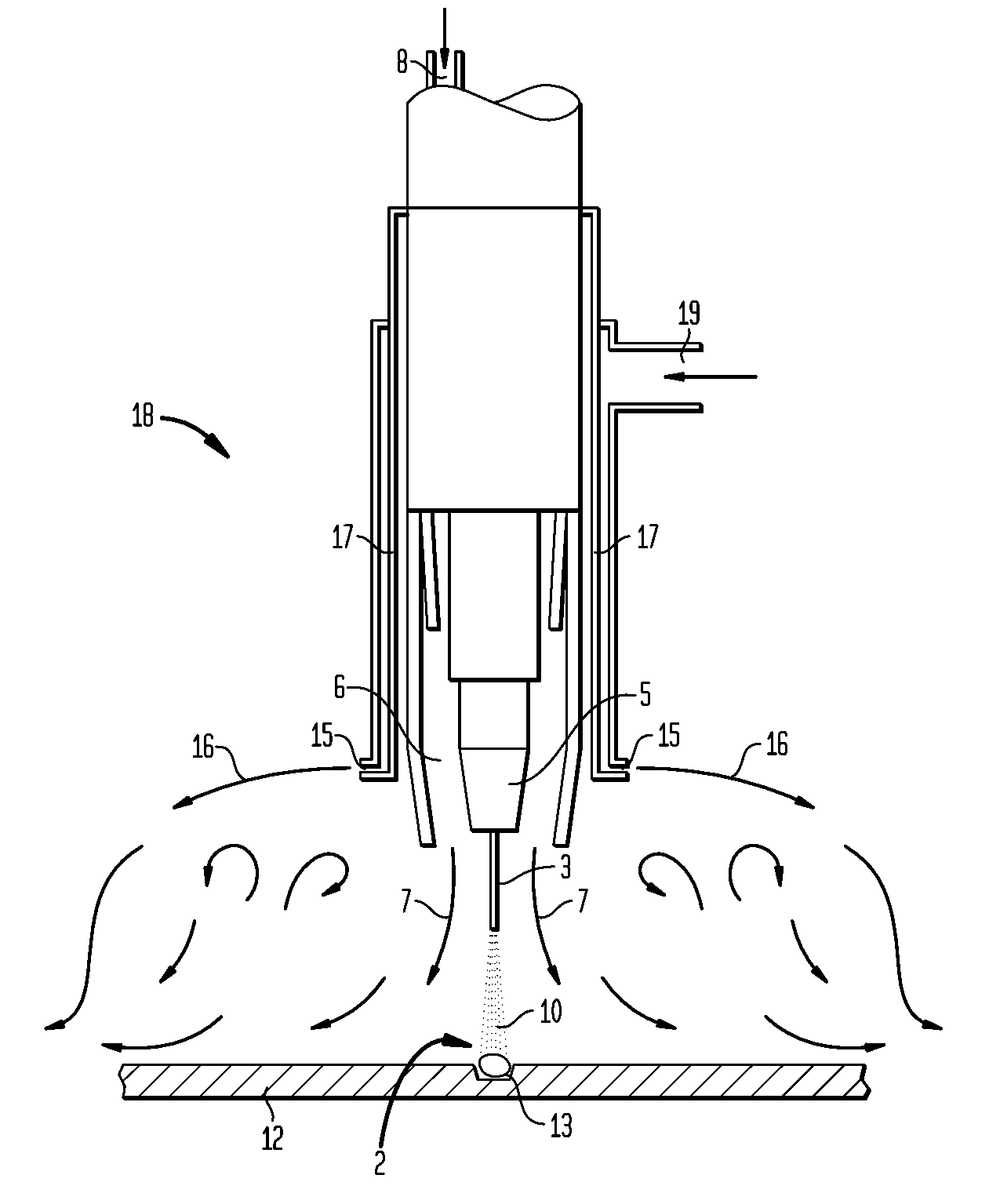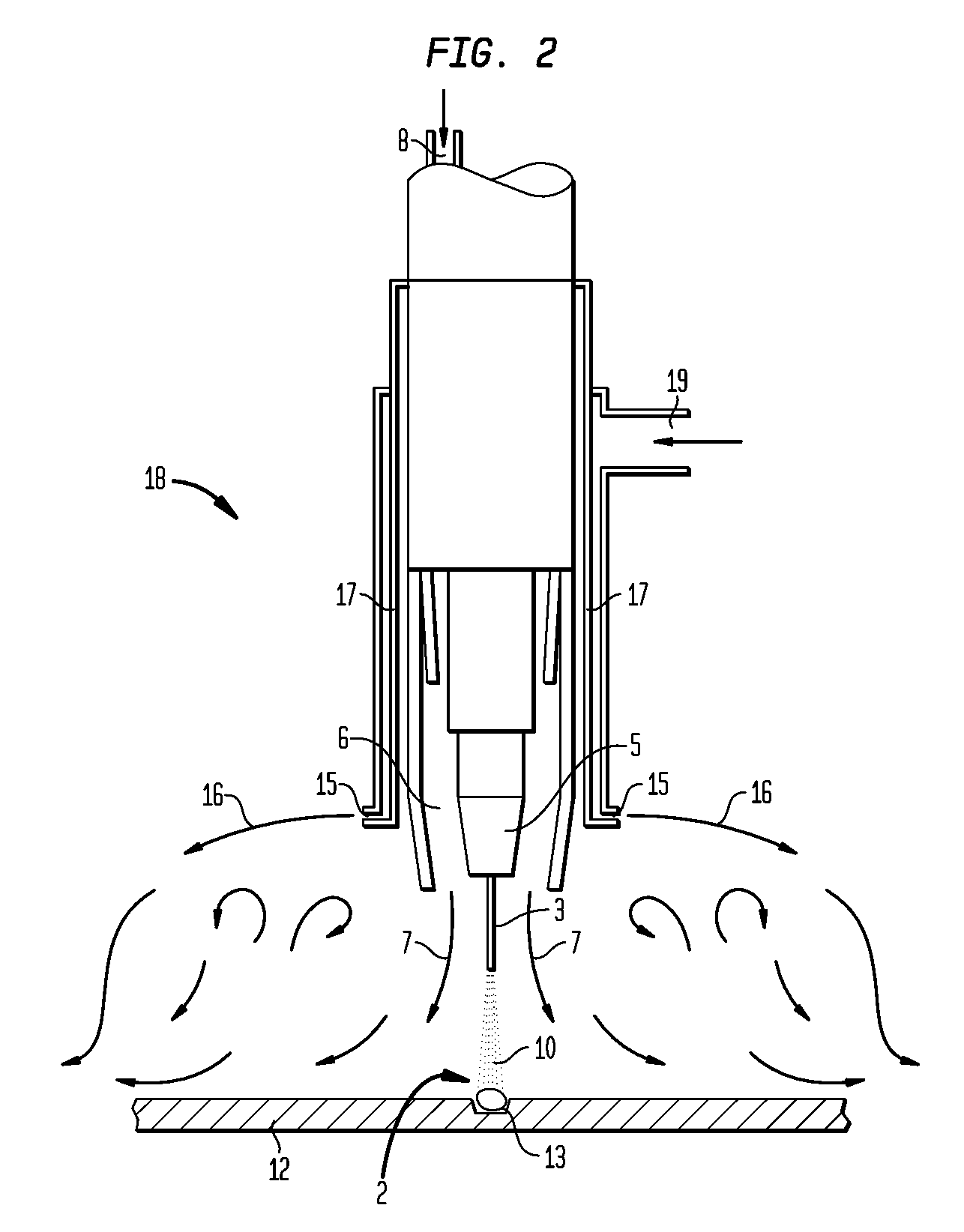Method for controlling weld quality
a technology of quality control and welds, applied in the field of welding, can solve the problems of affecting the mechanical strength of welds, increasing the propensity for cracking and embrittlement, and deleting the effect of weld strength, so as to improve the effective heat about the electrode, improve the control of the weld bead temperature, and increase the plate heating
- Summary
- Abstract
- Description
- Claims
- Application Information
AI Technical Summary
Benefits of technology
Problems solved by technology
Method used
Image
Examples
Embodiment Construction
[0065]Throughout the figures presented herein like features have been given like reference numerals. Further, as will be appreciated the arrows in the Figures that represent gas flows present simplified versions of the gas flow regimes.
[0066]Referring initially to FIG. 1, a conventional GMAW torch 1 is shown comprising a heat source adapted to provide heat to welding site 2 from a consumable welding electrode 3. In the GMAW process the welding electrode 3 is a continuous welding wire 4 which is generally guided by a contact tube 5. A shield gas port 6 is also provided for passage of shield gas. The shield gas port 6 is adapted to direct a shield gas curtain 7 around the electrode 3 and the welding site 2 such that the shield gas curtain 7 closely surrounds the electrode 3. The welding wire 4 may include a fluxed core (not shown) and can be used with or without the shield gas curtain 7. The shield gas port 6 includes an upstream shield gas inlet 8, which is adapted for attachment to ...
PUM
| Property | Measurement | Unit |
|---|---|---|
| flow rate | aaaaa | aaaaa |
| flow rate | aaaaa | aaaaa |
| gas flow rate | aaaaa | aaaaa |
Abstract
Description
Claims
Application Information
 Login to View More
Login to View More - R&D
- Intellectual Property
- Life Sciences
- Materials
- Tech Scout
- Unparalleled Data Quality
- Higher Quality Content
- 60% Fewer Hallucinations
Browse by: Latest US Patents, China's latest patents, Technical Efficacy Thesaurus, Application Domain, Technology Topic, Popular Technical Reports.
© 2025 PatSnap. All rights reserved.Legal|Privacy policy|Modern Slavery Act Transparency Statement|Sitemap|About US| Contact US: help@patsnap.com



